

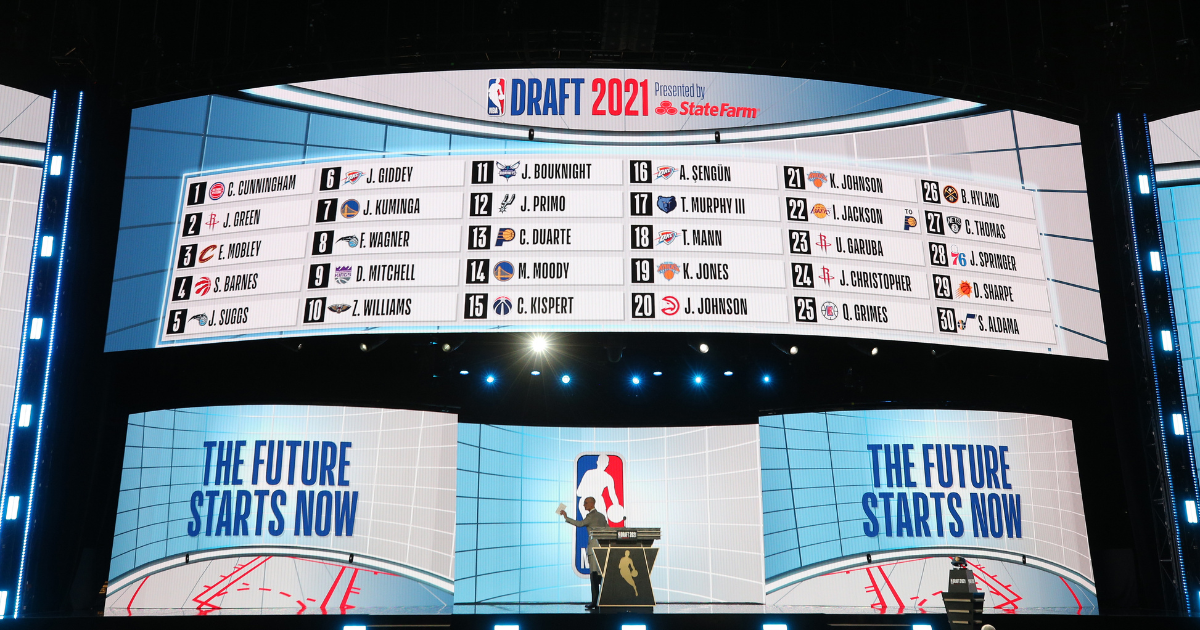
The NBA Finals get underway between the Boston Celtics and Dallas Mavericks as the rest of the league turns attention to pre-draft workouts in the final three weeks leading up to draft night. With years of tape and the NBA Combine in the rear-view, it is time to update the Top 40 board of prospects.
The NBA Draft is scheduled for June 26 and 27, spread across two days for the first time this year. Before that, there are several key dates to watch. The deadline for international prospects to withdraw set for June 16, which will finalize the class after college decisions last month.
Various private workouts will take place between now and the NBA Draft, with some players shutting things down after getting a promise from an interested team. As teams finalize their board, the top prospects continue to shift around.
Here is how the Top 40 prospects in the 2024 NBA Draft stack entering June.
Alex Sarr has shown himself to be one of the prospects with the highest upside while playing in the NBL. Playing in a league with established professionals, his tools on both ends of the floor suggest he is ready to play in the NBA and could quickly develop into the next versatile big man. The 7-foot-1 center offers many of the things NBA teams are looking for at this position. He shot 52% from the field and 29.8% from 3, but shows good form on his jumper.
Sarr remains in contention to be the top pick in the NBA Draft, with Zaccharie Risacher also drawing interest for the top spot. Regardless of where the Hawks go, he will not have to wait long to hear his name called.
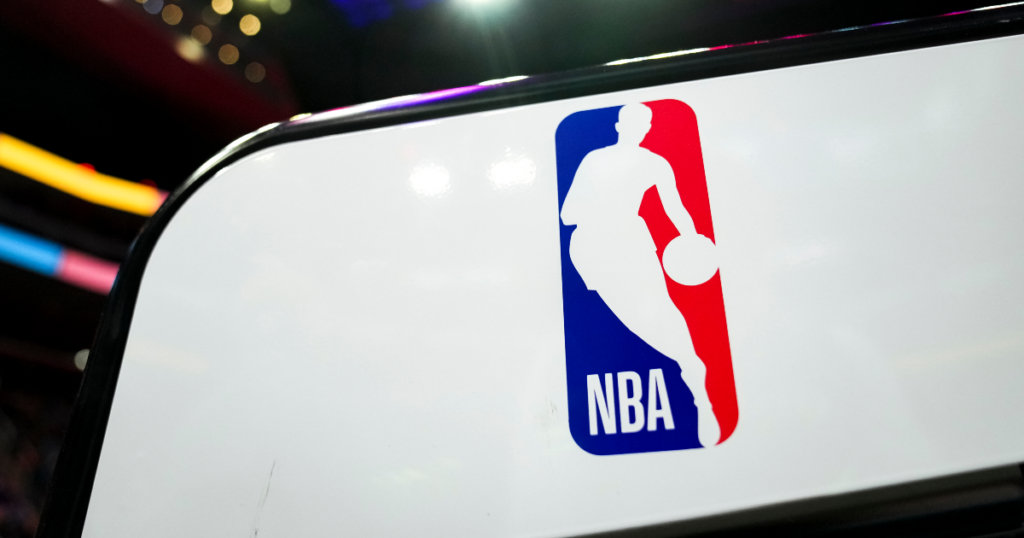
Zaccharie Risacher gained momentum when he went on a tear behind the 3-point line. The number has since come down — to a still impressive 42.6% — while still showcasing what NBA teams want to see from a 3-and-D prospect. The 6-foot-8 forward has great length and promises to fill out his frame. He works off screens and cuts to the basket well, which should provide him an immediate role as the shooting percentage evens out.
Risacher is in the same spot as Sarr at this point, competing for the top spot in the NBA Draft without much concern that he will fall after a strong playoff performance to conclude his season.
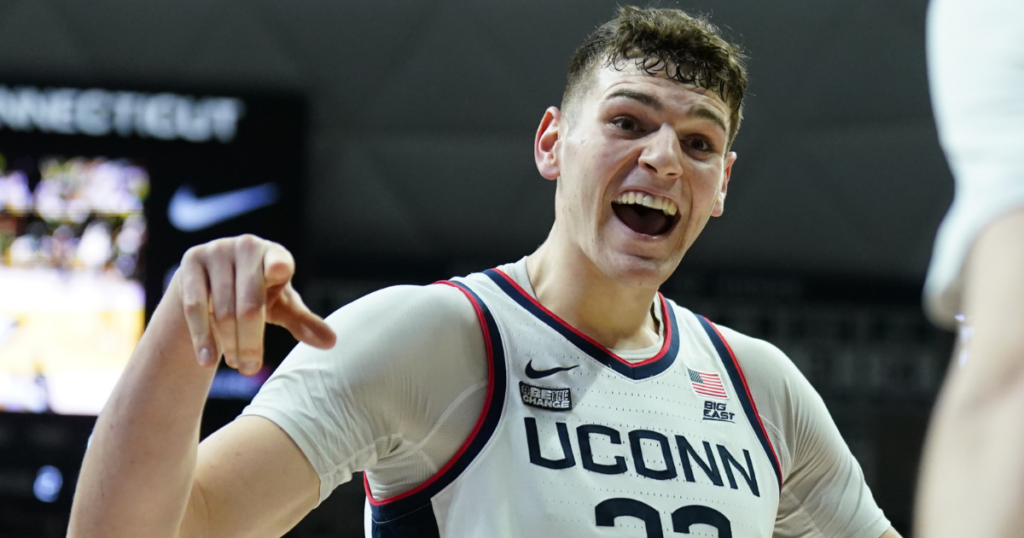
Donovan Clingan saw his stock skyrocket during the NCAA Tournament as he increased his minutes and provided UConn a dominant interior presence. However, the journey to becoming one of the top prospects in this class started well before March. The 7-foot-2 center has great size and impacts how opponents approach the rim when he is able to camp near the basket. During the national championship run, the biggest improvements were his conditioning and movement.
Clingan’s range continues to be a topic of discussion given the centers on each roster of the lottery teams, but trade rumors which have built up steam should get him off the board early regardless.

Reed Sheppard is likely the best shooter in the NBA Draft this year, knocking down 52.1% on 4.4 attempts per game. The ability to also contribute as a playmaker and rebounder gives him one of the highest floors. In addition to the 6-foot-3 guard’s established offensive impact, he is an intriguing defensive prospect. He boasts great numbers while often gambling for steals. This approach could look drastically different based on the defenders he plays with in the NBA.
Sheppard also sits in an interesting spot as teams look to move around the board. He seems to fit well with a number of the potential suitors and has a skillset which helps him pair with any type of teammate.
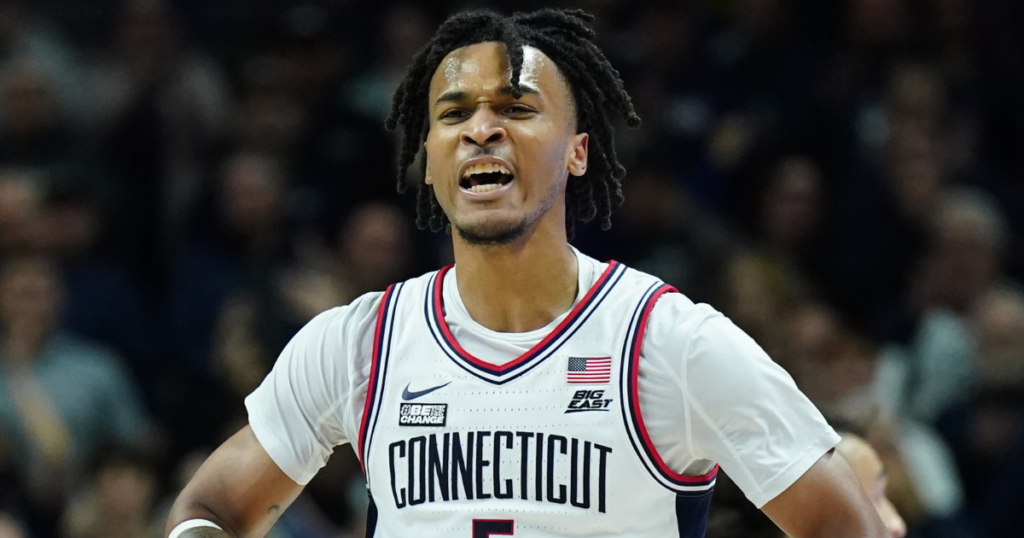
Stephon Castle showed off the mentality NBA teams will covet, coming in to help UConn defend its championship as a complementary piece. Within that role, he demonstrated an ability to play either guard spot. The biggest question surrounding the 6-foot-6 playmaker is how well his shooting will translate to the next level. He shot just 26.7% from 3, not well enough to garner respect from professional defenders.
Reports of Castle wanting to play point guard in the NBA have circulated and shifted his list of potential destinations.
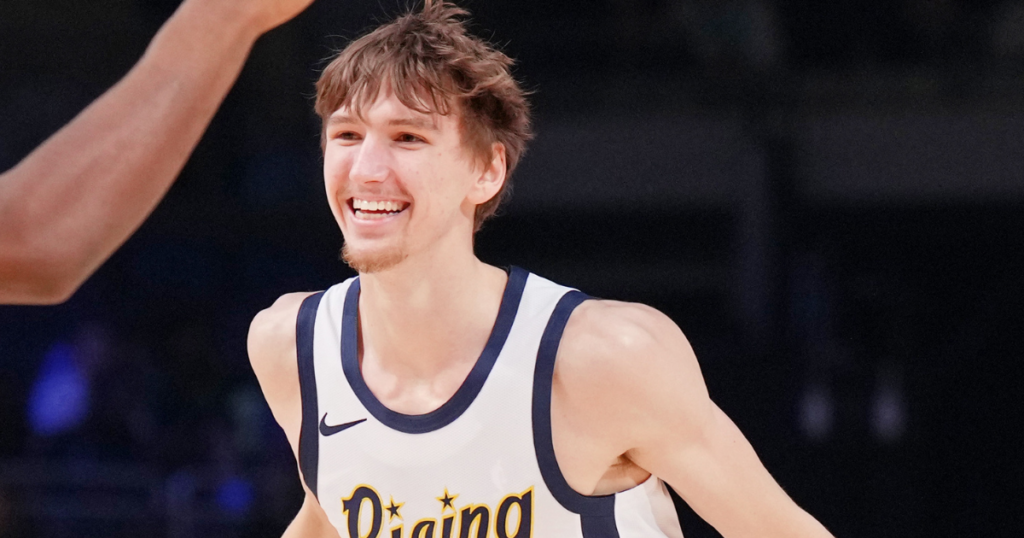
Matas Buzelis entered the season as one of the top prospects, but injuries and a general struggle which plagued the entire G-League Ignite team dropped his stock significantly. The 6-foot-10 forward has skills which promise to translate well to the NBA, but he is likely not ready to make an immediate impact. Shooting just 22.2% from 3 also leaves question marks he must answer.
The Buzelis market has not been one that has drawn widespread movement to this point, as he remains steady in where he has been projected to land.
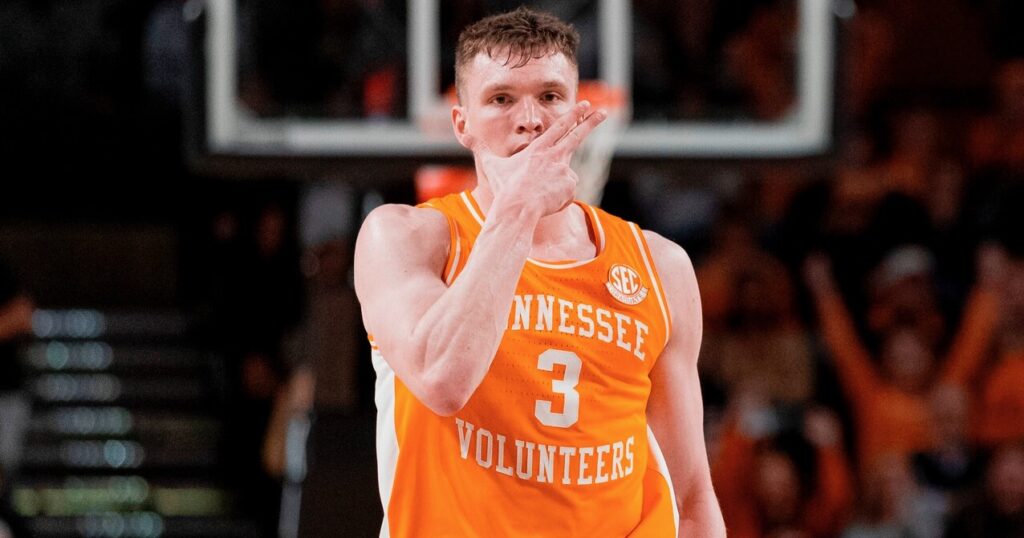
Dalton Knecht left no doubt that he can score the basketball at any level. Upping his production while moving from Northern Colorado to Tennessee makes him one of the highest floor players on offense. The 6-foot-6 wing will now go head-to-head with athletic defenders more often in the NBA, giving him another area to grow. He improved defensively, but still has questions to answer on that end as well.
The market for Knecht promises to develop as the order becomes clear, but ahead of trades it remains unclear what the best fit will be for him or the teams picking in his range.
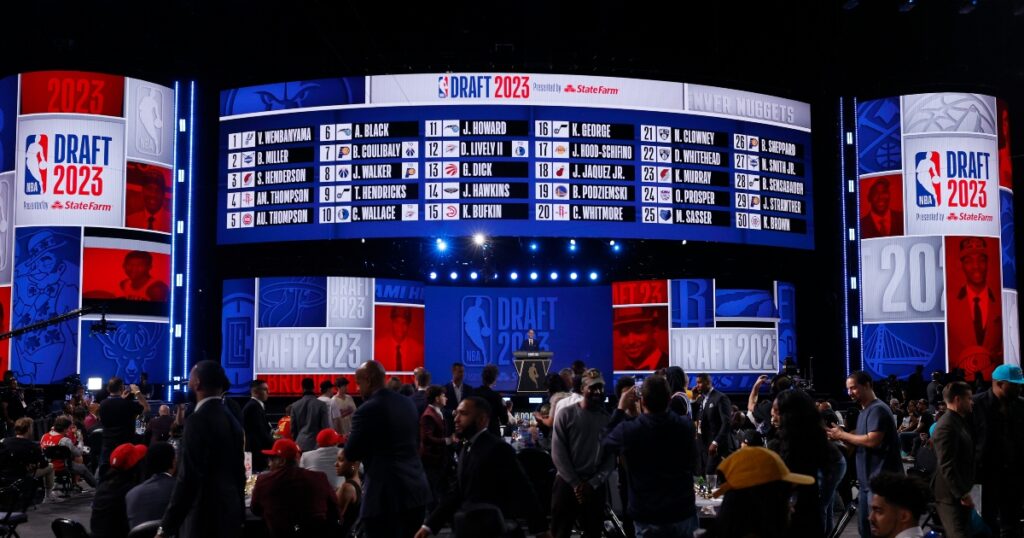
Nikola Topic started the year strong as a balanced playmaker who showed upside as a shooter based on his 87.1% from the free throw line. However, an injury derailed his season as he reached a higher level of competition. The 6-foot-6 guard fits the mold of a playmaker with size which has become coveted around the NBA. He must take the next step as a scorer to reach his potential, but could immediately help initiate offense.
The market for Topic has also been a topic of conversation over the past month, with a partially torn ACL discovered after his second knee injury of the year drawing concern.
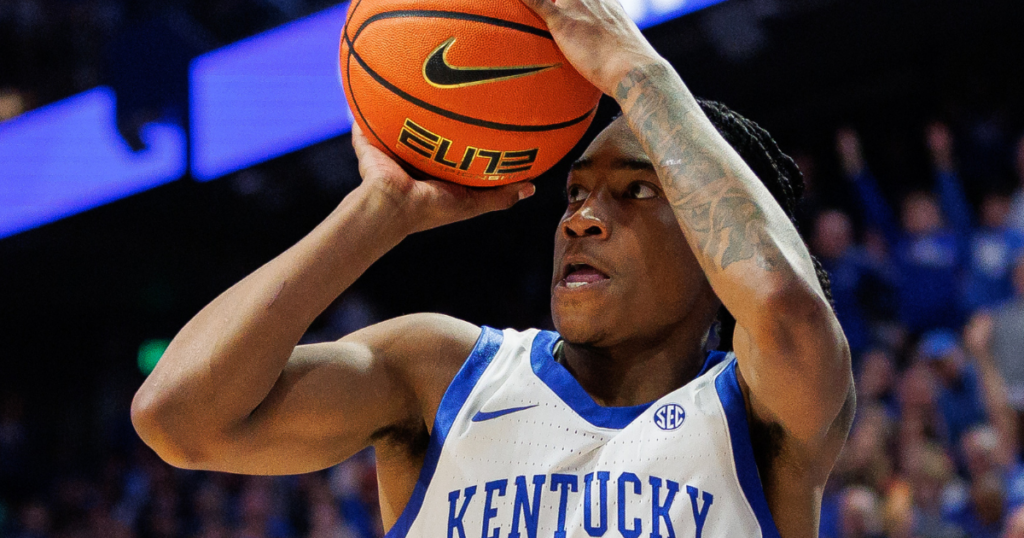
Rob Dillingham is an electric scorer and probably the most NBA-ready offensive weapon in the draft class. However, he is also among the least prepared for the nightly challenge of guarding professional guards. The 6-foot-2 guard came off the bench for Kentucky, shooting 44.4% from 3 and 47.5% overall. Whether he remains in a 6th-man role or emerges into a starting lineup, he looks primed to become the next Wildcat in this mold to star as a professional.
Dillingham has started to fall from the list of potential Top Five names in some conversations as rumors swirl that the point guard needy San Antonio Spurs could seek a ball-handler through trade.
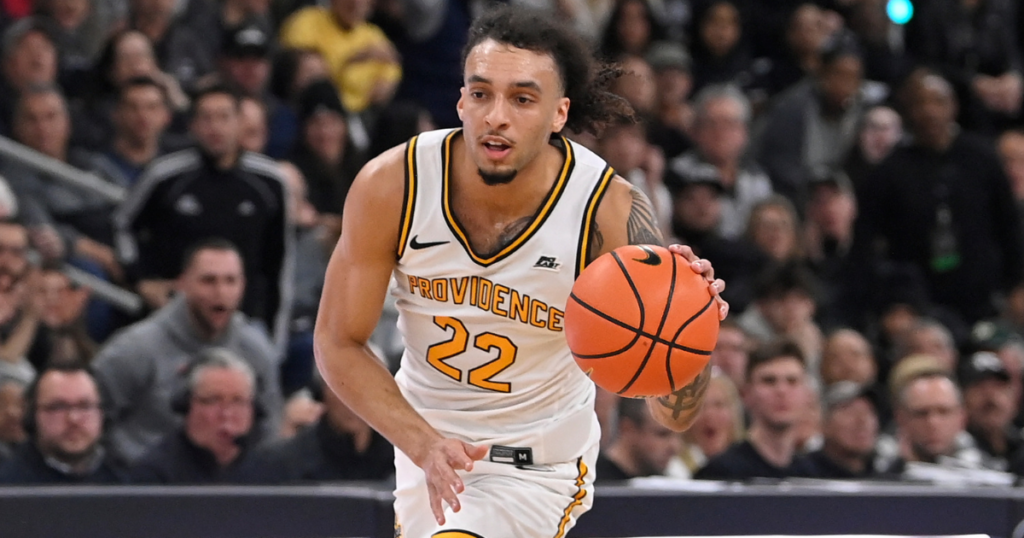
Devin Carter took over full responsibility for Providence this season when his teammate went down with injury. The emerged into the Big East Player of the Year and boosted his draft stock more than any other prospect. The 6-foot-3 guard contributed 8.7 rebounds and 3.6 assists per game, making an all-around impact which extended to the defensive end as well. All this, paired with the fact he comes from an NBA family — son of Anthony Carter — will make him a front office favorite.
Carter has risen up boards consistently during the pre-draft process after a strong NBA Combine performance which propelled him to a likely lottery pick.
11. Ron Holland, G-League
Ron Holland was also part of the disastrous G-League Ignite season which saw every player’s stock fall. Poor efficiency numbers on both ends of the floor hurt Holland, who was on the floor as much as any of the young prospects involved. The 6-foot-8 forward held an offensive rating of just 93, and a defensive rating of 115. How much of his struggle can be undone while playing within an NBA rotation remains the question, and some team is going to gamble on his upside.
The conversation surrounding Holland is another wide mark given his pedigree and struggles, but is still in the mix for a lottery spot.
12. Isaiah Collier, USC
Isaiah Collier struggled early in the college basketball season, but quietly turned things around and finished well after an injury. He dropped down draft boards and has not been able to fully recover, perhaps influenced by the disappointment surrounding his team. The 6-foot-5 guard is capable of initiating the offense, and could continue building on his improved efficiency numbers. The No. 1 player in the On3 Industry rankings has plenty left to unlock.
Similar to Collier, there is some conversation about how the pre-draft process could bring Collier closer to his projected slot before a tumultuous season than after.
13. Tidjane Salaun, France
Tidjane Salaun is among the most difficult prospects to pin down based on his low usage this season. The potential to get an athletic, long forward with shooting touch will draw in many. Questions remain how large of a role the 6-foot-9 forward can take on offensively, and what he will look likely matched up with NBA-caliber offensive players in space. At the end of the day, someone will bet on upside.
Salaun’s stock is on the rise after a strong finish to the season and continued discussion about his long-term fit as an NBA player.
14. Jared McCain, Duke
Jared McCain emerged in the Duke backcourt this season among several players looking to build their NBA Draft stock. His balance of offensive production and defensive stability helped an NCAA Tournament run. The 6-foot-3 guard shot 41.4% from 3 and 88.5% on free throws, all while demonstrating his ability to play both spots. His five rebounds per game also boost his stock as an all-around player.
McCain remains in the conversation he has been in as a borderlines lottery pick given his strengths and weaknesses.
15. Cody Williams, Colorado
Cody Williams, brother of Oklahoma City Thunder standout Jalen Williams, came into the season as the No. 1 ranked freshman in the On3 recruiting rankings. Injuries slowed down his season, which lacked the consistency many hoped to see. The 6-foot-8 wing shot 55.2% from the field and 41.5% from 3, but ended the season coming off the bench for Colorado as veterans took on the bulk of the important minutes.
Williams has also held steady throughout most of the pre-draft process to this point in terms of perception and stock.
16. Ja’Kobe Walter, Baylor
Ja’Kobe Walter demonstrated a different mentality in the NCAA Tournament, despite ultimately falling in the Second Round. His ability to use athleticism on the wing helps him make plays offensively and defensively. However, the 6-foot-5 wing struggled for most of the season to find efficiency. He shot just 37.6% from the field, although playing within an offense where he is not the go-to scorer could help.
Walter did not pick up as much steam following his Baylor performance, seeming to settle just below the lottery conversation in most cases.
17. Kyle Filipowski, Duke
Kyle Filipowski returned to Duke last season looking to improve his draft stock as a big man who can space the floor offensively and provide interior support on defense. The 7-foot big upped his 3-point shooting to 34.8% this season, and nearly doubled his blocks per game as well. While the offense is talked about often, his defense could be an underrated difference maker in the right system.
The stock for Filipowski remains even during the pre-draft process so far, with plenty of intriguing fits for his skillset in this range.
18. Carlton Carrington, Pitt
Carlton ‘Bub’ Carrington is a lead guard with good size who produced well in his freshman season at Pitt, raising his stock as a potential NBA Draft pick. His combination of scoring and facilitating upside, along with length and explosiveness make him a key name to remember.
Carrington has risen his stock more than perhaps any other prospect by putting his skillset on full display in drills during the NBA Combine and showing growth he experienced as a freshman.
19. Tristan Da Silva, Colorado
Tristan Da Silva is another college veteran with year-over-year improvement. As a forward shooting 39.5 percent from 3, he fits in well with what many teams want from a role players. Playing in a system which featured multiple NBA prospects last season, the 6-foot-8 German playmaker kept his production steady from the previous year.
Da Silva’s market is clear as a high-floor wing who can come into any organization at a position of need.
20. DaRon Holmes II, Dayton
DaRon Holmes continued to add elements to his game every season at Dayton, leaving as one of the most balanced center prospects in the class. The development of a 3-point shot, which he knocked down at 38.6 percent in 2023-24, has paired well with his 3 stocks (steals + blocks) per game. The result was a 123 offensive rating and 94 career defensive rating.
Holmes is another player who saw his stock go up by backing up performances at Dayton with offseason numbers which impress. He now waits to see how high in the first round he can move as a modern big.
21. Kel’el Ware, Indiana
Kel’el Ware is a 7-foot center who had a breakout season at Indiana after starting at Oregon as a five-star prospect. A 25 PER ranks him among the best in college basketball. Averaging 15.9 and 9.9 with Big Ten All-Defense honors will draw plenty interest. He also shot 42.5 percent from the 3-point line, which he will need to repeat in workouts after shooting just 27.3 percent in 2022-23.
Ware has risen his stock as conversations continue about his growth at Indiana following a disappointing season at Oregon, moving him closer to the lottery than the second round.
22. Yves Missi, Baylor
Yves Missi fits the mold of a modern center with his length and athleticism, helping him make an impact of the defensive end beyond rim protection. However, there is still room for him to fill out if he must guards the NBA’s strongest players. He shot 61.4 percent from the field, averaging better than five rebounds per game in his one season at Baylor. Finding the right pick-and-roll partner could be the biggest key to unlocking him offensively.
Missi is another player who has watched his draft stock remain relatively flat to this point, with his athletic tools on display and the room for growth clear.
23. Zach Edey, Purdue
The back-to-back college player of the year is among the most accomplished amateurs to enter the NBA in years. However, the way Zach Edey translates to the professional ranks remains a question. The defensive three seconds rule and pace of play make his role on both ends less than a sure thing. However, success by players like Rudy Gobert and Walker Kessler in recent seasons suggests a definite path to production.
Edey is by far the most polarizing prospect in the NBA Draft with a range between the lottery and the second round depending on the conversation. He settles in here, where he has a chance to rise through workouts.
24. Baylor Scheierman, Creighton
Baylor Scheierman proved himself to be one of college basketball’s most productive players over five seasons. He is a well-balanced contributor on both ends who has accepted his role within the team. He averaged 18.5 points, 9.0 rebounds and 3.9 assists while shooting 38.9 percent from 3 and 87.6 on free throws this season. In addition, his 118 offensive rating and 100 defensive rating showcase his all-around game.
Scheierman moved up the board by performing well in the NBA Combine, including the scrimmage before making a clear statement on his competitive nature.
25. Johnny Furphy, Kansas
Johnny Furphy raised his draft stock in his one season at Kansas, coming from Australia to space the floor in college basketball. Fitting the mold of what many NBA teams are looking for, his overachievement could see him reach the professional ranks after one season. The 6-foot-9 wing shot 35.2% from the 3-point line, also cutting to the basket well around his co-stars on the court.
Furphy opted to remain in the NBA Draft rather than make a Kansas return, setting the table for him to be picked somewhere below the lottery this year.
26. Justin Edwards, Kentucky
Justin Edwards struggled early in the season to make an impact for Kentucky. Despite his high rankings as a recruit, the wing had little offensive impact until turning a corner late. By the time the season was over, Edwards had raised his shooting percentage to a 48.6, 36.5 split and was able to showcase his defensive ability on the wing.
Edwards remains in the conversation as a late first round pick or early second round pick as the pre-draft process rolls on.
27. Terrence Shannon, Illinois
Terrence Shannon proved to be one of the best offensive players in college basketball, improving his efficiency numbers across the board from his career totals. The ability to create for others also elevated the Illinois offense. For the 6-foot-6 guard, questions about his game will be background to the off-court issue. He was suspended in late December 2023 by Illinois after a warrant was issued for his arrest for an alleged rape that took place in Kansas, later getting a restraining order against the school.
Shannon’s draft stock is entirely tied to his legal proceedings at this point, making this a difficult projection to make.
28. Harrison Ingram, North Carolina
Harrison Ingram’s big season at North Carolina helped showcase more than his talent-level, but also his NBA intangibles. The former five-star recruit made an impact on both ends of the floor and filled a role. Shooting 38.5 from 3 while grabbing 8.8 rebounds from the wing translates well in any system. He raised his offensive rating by 13 points in the same season his defensive rating dropped 6 points.
Ingram is a player likely to come off the board at some point during the second round, but could rise if he impresses in workouts.
29. Dillon Jones, Weber State
Dillon Jones put up big-time production at Weber State, averaging 20.8 points, 9.8 rebounds and 5.2 assists after withdrawing at the deadline last season. The 6-foot-6 forward is a hard-nosed player who will not be on the ball nearly as much as he was during college, but could easily fit the Bruce Brown mold which has proven valuable.
Jones is another player who fits into the mold of Ingram, looking at a second round selection with workouts determining where he lands.
30. Oso Ighodaro, Marquette
Oso Ighodaro is another player who translates into the modern game, with several examples of players in his mold being drafted in the first round. However, his lack of floor-spacing on offense limit the overall potential to star on that end of the court. Despite that, his defensive impact is likely to translate.
Ighodaro holds a wide range as the center who is next up in the pecking order, but plays a different style from most above him.
31. Kyshawn George, Miami
Kyshawn George burst onto the scene in his one year at Miami after coming over from Switzerland. While his game remains raw, the potential places him in the conversation to go inside the first round. The 6-foot-8 wing averaged just 7.6 points on a team which failed to meet expectations, but his 40.8 percent shooting from 3 and physical tools were on display.
George is likely to come off the board in the first round with plenty teams interested in his upside on the wing.
32. Izan Almansa, G-League
Izan Almansa came to the G-League Ignite as one of the most decorated teenage European prospects. The down season hurt his stock the same way it did others. Despite all that, he was able to shoot 52.4 percent from the field with 6.9 rebounds. There is enough in the stats that going back toward previous youth basketball tape can help retain a first-round grade.
Almansa still has the opportunity to withdraw from the NBA Draft, but is likely to fall somewhere in the second round if he remains in.
33. Tyler Smith, G-League
Tyler Smith might be the one G-League Ignite player who did not see his stock drop significantly over the past year. The 6-foot-11 forward showed off a unique set of skills. Shooting 35.2 percent from 3 and 74.2 percent on free throws helps project him as an offensive weapon, although his raw game still requires refinement on both ends.
Smith has a wide range as well, perhaps wider than any other G-League player. A team could bet on upside in the late teens or pick him as the best available player in the second round.
34. Tyler Kolek, Marquette
Tyler Kolek is one of the best offensive playmakers in college basketball, setting up the offense in an efficient way. Adding more as a shooter should help him stick in an NBA rotation. The 6-foot-3 point guard averaged 15.3 points, 4.9 rebounds and 7.7 assists, shooting 38.8 percent from 3. He also upped his PER to 24.3 this season.
Kolek has plenty of traits which could draw interest in the 20s of the first round, particularly teams looking for a steady backup point guard.
35. Jamal Shead, Houston
Jamal Shead became one of Houston’s most important players over the past four seasons, providing major production on both ends of the court. However, a lack of shooting limits his ceiling. The 6-foot-1 guard was named Big 12 DPOY after averaging 2.2 steals. He also averaged 6.3 assists as an initiator on offense.
Shead is likely to go sometime in the second round given his frame, but is sure to land somewhere that values his style of play.
36. Kevin McCullar Jr., Kansas
Kevin McCullar took a leap on offense this season, averaging 18.3 points for Kansas with a history as a Big 12 All-Defensive team selection. However, his 3-point percentage remains below an efficient mark and an injury history which has limited his game time across multiple seasons.
McCullar could land inside the first round given his growth on offense last season, while other teams could wait until the second round given the potential health concerns.
37. Jaylon Tyson, Cal
Jaylon Tyson raised his stock by transferring to California from Texas Tech this season. He has nearly doubled his production in every college season, showcasing constant growth. In a league which is always looking for more production on the wing, the 6-foot-7 player will have a chance to become more consistent in a role.
Tyson has seen wide swings from various rankings throughout the pre-draft process but seems destined to be an early second round pick.
38. Ryan Dunn, Virginia
Ryan Dunn is the best perimeter defender in the 2024 NBA Draft class, no question about it. Unfortunately, he possesses very few offensive traits which promise to translate immediately or in the near future. The 6-foot-8 forward will be used in situational matchups to maximize his talent.
Dunn is a player who could have climbed with any offensive showcase but appears likely to fall into the late first round or early second round depending on team fit.
39. Bobi Klintman, Sweden
Bobi Klintman opted to head to the NBL last season after testing the NBA Draft waters at Wake Forest, improving his standing with better shooting to complement his athleticism and length. The 6-foot-9 forward brings intriguing long-term upside as a 3-and-D player.
Klintman has seem a slight boost to his stock by backing up the improvement seen over the last season during the offseason.
40. Pacome Dadiet, France
Pacome Dadiet is a good shooter, better than his 31.1 percent mark, and has intriguing offensive upside which has been put on display this season. The 6-foot-8 wing player also has the tools to improve on the defensive end although an adjustment must be made in the NBA.
Dadiet’s stock appears on the rise with the potential to see the first round, with a floor somewhere relatively early in the second round.